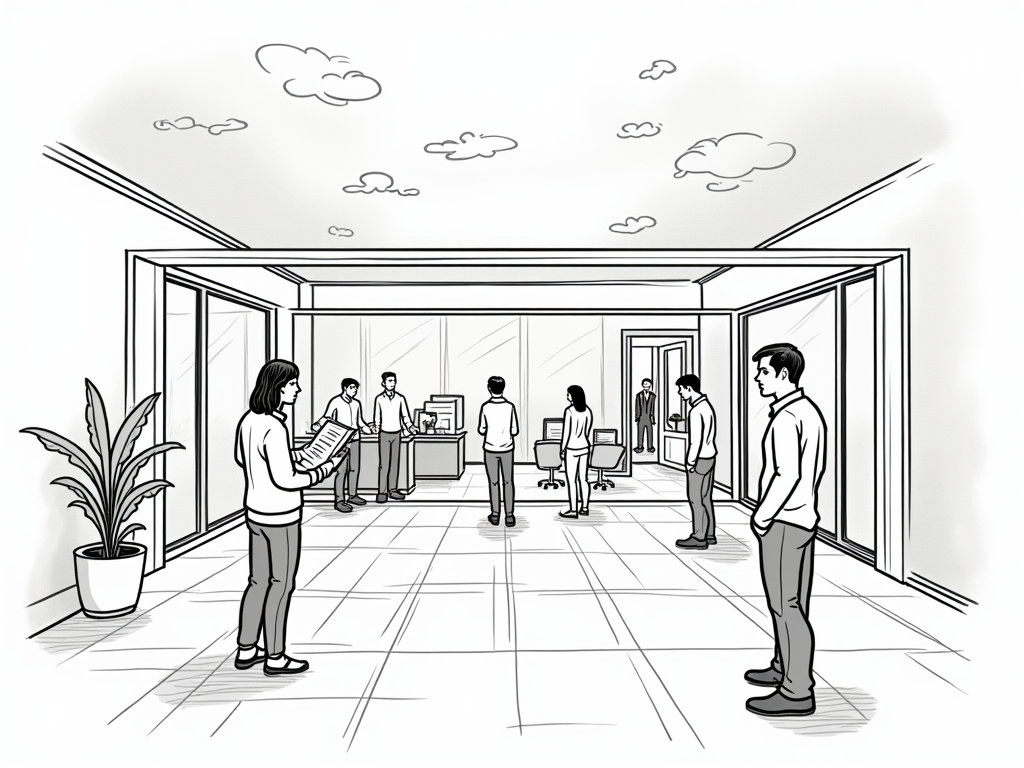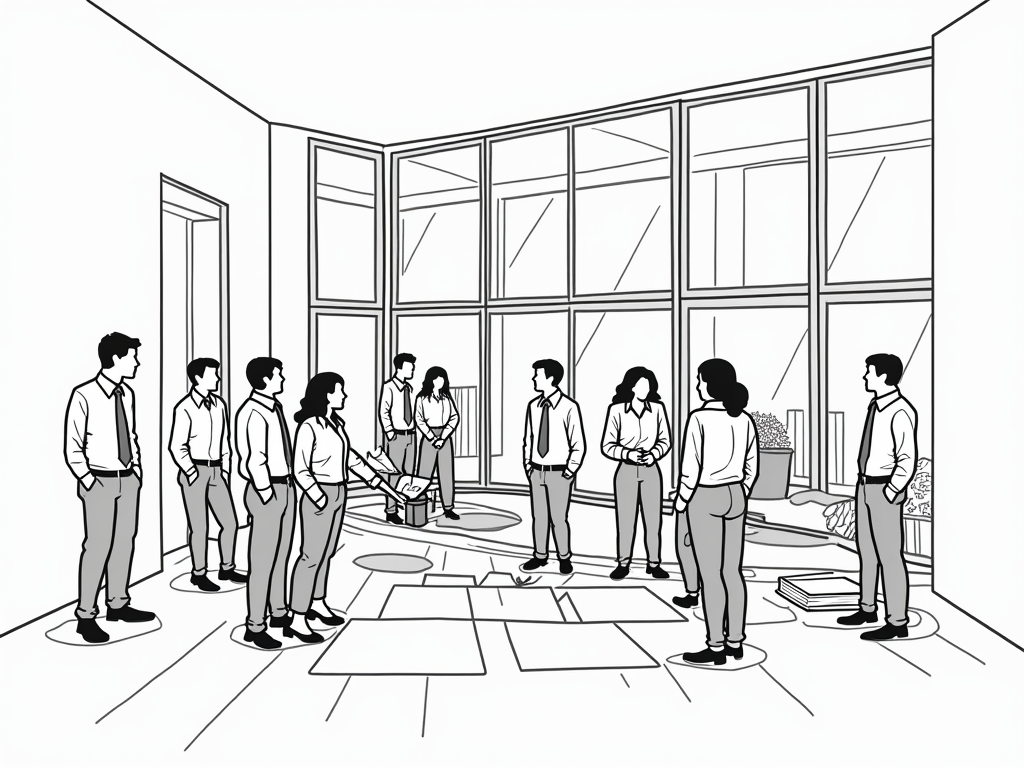
Renovating Greek Property: Complete Cost Breakdown and Insider Tips for 2024
Reading time: 12 minutes
Table of Contents
- Introduction: The Greek Renovation Renaissance
- Cost Overview: What You’ll Really Pay
- Regional Variations: Island vs. Mainland Costs
- Material Costs: From Traditional to Modern
- Labor Costs: Finding and Managing Skilled Workers
- Permits and Regulations: Navigating Greek Bureaucracy
- Real-Life Renovations: Two Case Studies
- Hidden Costs That Catch Foreign Renovators Off-Guard
- Strategic Cost-Saving Approaches Without Compromising Quality
- Realistic Timeline: Seasonal Considerations
- Sustainable Renovation Options in Greece
- Your Greek Renovation Roadmap: From Dream to Reality
- Frequently Asked Questions
Introduction: The Greek Renovation Renaissance
Ever stood in a centuries-old Greek stone house and felt the whisper of history through its weathered walls? There’s something magical about these spaces—but transforming a neglected Greek property into your dream Mediterranean haven involves far more than romantic notions.
Greece is experiencing a renovation renaissance. With property prices still recovering from the economic crisis and a new wave of digital nomads and retirees seeking authentic Mediterranean living, renovation projects are booming across the country. But here’s the straight talk: without proper planning and local knowledge, your Greek dream home can quickly become a financial nightmare.
Whether you’re considering a modest apartment refresh in Athens or completely rebuilding a crumbling stone farmhouse in the Peloponnese, understanding the true costs involved is critical. This isn’t just about budgeting—it’s about creating a resilient renovation strategy that respects both Greek building traditions and your financial reality.
Cost Overview: What You’ll Really Pay
Let’s cut to the chase with comprehensive renovation costs in Greece for 2024. These figures represent averages based on current market conditions:
| Renovation Level | Cost per m² (€) | What’s Included | Typical Timeline | Best For |
|---|---|---|---|---|
| Basic Refresh | 250-450 | Painting, minor repairs, basic fixture updates, light cosmetic work | 2-4 weeks | Recently built properties needing modernization |
| Medium Renovation | 500-800 | Partial rewiring, new plumbing, bathroom/kitchen renovation, flooring replacement | 2-4 months | Properties 15-30 years old |
| Major Renovation | 850-1,200 | Complete rewiring, plumbing replacement, structural repairs, full modernization | 4-8 months | Older properties requiring significant updates |
| Historical/Traditional Restoration | 1,200-2,000+ | Specialized traditional materials, artisan craftwork, structural reinforcement, authentic restoration | 8-18 months | Historic properties, traditional stone houses |
Note: These costs assume hiring licensed professionals and obtaining proper permits. DIY approaches may reduce immediate costs but often lead to complications and expenses later.
Regional Variations: Island vs. Mainland Costs
If you’re considering options to buy home in greece, understand that location dramatically impacts renovation costs. The charming island cottage and the mainland village house come with very different price tags.
Why Island Renovations Cost More
Islands face a perfect storm of cost-driving factors. Transportation alone adds 15-25% to material costs. Imagine paying €150 just to ship a toilet from Athens to Santorini! Add limited competition among contractors, seasonal workforce availability, and challenging logistics, and you’re looking at premiums of 30-50% over mainland costs.
Quick Scenario: A client renovating identical 85m² properties in Athens and Mykonos found the island project cost €68,000 compared to €42,000 in the capital—a 62% premium!
Regional Cost Comparison
Average medium renovation costs per square meter (excludes luxury finishes)
Material Costs: From Traditional to Modern
Greek renovation materials fall into two distinct categories: traditional and contemporary. Your material choices will dramatically impact both costs and authenticity.
Traditional Materials and Their Modern Equivalents
Traditional Greek building materials like hand-carved stone, terracotta tiles, and chestnut timber create authentic character but come at premium prices. A genuine marble threshold from Thassos might cost €180 per linear meter, while a convincing marble-look composite alternative might be just €45.
Finding this balance between authenticity and practicality is the art of Greek renovation. Skilled renovators often strategically splurge on a few high-impact authentic elements while using modern alternatives elsewhere. For example, using authentic terracotta roof tiles (€45-65/m²) on visible exterior areas while choosing modern thermal-insulated roof panels (€28-40/m²) for less visible sections.
Sourcing Strategies That Locals Use
Greek contractors and architects have mastered the art of material sourcing. They know when the annual factory sales happen, which warehouses offer discounts on bulk orders, and which family-run businesses produce traditional materials at reasonable costs.
Pro Tip: The demolition phase offers opportunities to salvage valuable traditional materials. Old terracotta tiles, wood beams, and stone often have significant resale value or can be repurposed. One homeowner in Nafplio sold salvaged floor tiles for €2,800, offsetting 8% of her total renovation costs.
Labor Costs: Finding and Managing Skilled Workers
Labor typically accounts for 40-60% of Greek renovation budgets. Here’s the current cost structure:
- General laborers: €60-80 per day
- Skilled tradespeople (plumbers, electricians): €90-150 per day
- Master craftspeople (stone masons, traditional plasterers): €120-200+ per day
- Project managers/site supervisors: €180-250 per day
- Architects/engineers: 8-12% of total project cost
The challenge isn’t just finding workers—it’s finding reliable, skilled professionals with experience in your specific type of renovation. This becomes especially difficult during peak season (April-October) when tourism-related construction absorbs much of the workforce.
The most successful renovations typically involve a Greek-speaking project manager who understands local customs, building practices, and has established relationships with quality tradespeople. Their fee (typically 10-15% of labor costs) often pays for itself through better pricing, quality control, and problem prevention.
Permits and Regulations: Navigating Greek Bureaucracy
Here’s a sobering reality: your gorgeous Greek renovation could be completely derailed by bureaucratic complications. Permitting isn’t just an administrative hassle—it’s a critical investment in your property’s legal status and future resale value.
Understanding the Permit System
Greek building regulations operate under three main categories:
- Minor Renovations (Μικρής Κλίμακας): Cosmetic changes, simple repairs, non-structural modifications. Processing time: 2-4 weeks. Cost: €200-600.
- Building Permit (Άδεια Δόμησης): Required for structural changes, additions, major renovations. Processing time: 2-6 months. Cost: €1,500-5,000+.
- Special Approvals: Required for properties in historical districts, near archaeological sites, or with protected status. Processing time: 6-12+ months. Additional costs: €800-3,000+.
The most expensive permit isn’t the one with the highest fee—it’s the one you failed to obtain. Fines for unpermitted work can reach €50,000+ and may require costly demolition and reconstruction. Properties with permit violations also face challenges with utility connections, insurance, and eventual sale.
Navigating Property Legalization
A significant percentage of Greek properties have some form of unauthorized construction. The government periodically offers legalization programs (τακτοποίηση αυθαιρέτων) that allow owners to declare and pay penalties for unauthorized structures rather than demolishing them.
Before purchasing any property for renovation, conduct thorough due diligence on its legal status. The cost to legalize unpermitted structures typically ranges from €2,000-15,000 depending on the extent of violations—a significant consideration in your renovation budget.
Real-Life Renovations: Two Case Studies
Case Study 1: Urban Apartment Renovation in Athens
Property: 92m² apartment in Koukaki, Athens
Owners: Michael and Sofia, British-Greek couple
Budget: €65,000 (€707/m²)
Scope: Medium renovation with complete bathroom and kitchen remodeling, new flooring throughout, electrical upgrades, HVAC installation, window replacement
Actual costs breakdown:
- Demolition and removal: €5,200
- Structural modifications: €3,800
- Plumbing and electrical: €12,400
- Floors and walls: €13,600
- Kitchen and bathrooms: €16,200
- Windows and doors: €8,400
- HVAC system: €9,800
- Permits and technical studies: €2,800
Final cost: €72,200 (11% over budget)
Timeline: Planned 3 months, actual 4.5 months
Major challenge: Discovered inadequate electrical capacity for modern appliances, requiring complete rewiring and utility upgrade
Case Study 2: Traditional Stone House in Pelion
Property: 110m² traditional stone house with 1,200m² land in Pelion peninsula
Owners: Lars and Anna, Danish couple
Budget: €120,000 (€1,091/m²)
Scope: Major renovation/restoration of collapsed section, roof replacement, traditional interior restoration with modern amenities, garden landscaping
Actual costs breakdown:
- Structural reinforcement: €22,400
- Roof reconstruction with traditional materials: €28,600
- Stone masonry and traditional plasterwork: €26,800
- Plumbing and electrical systems: €19,500
- Floors and woodwork: €21,300
- Kitchen and bathrooms: €17,900
- Windows and doors: €12,800
- Landscaping and exterior work: €9,400
- Permits, engineering studies, archaeological approval: €7,800
Final cost: €166,500 (39% over budget)
Timeline: Planned 8 months, actual 14 months
Major challenge: Archaeological discovery during foundation work caused 3-month delay for inspections and required design modifications
Hidden Costs That Catch Foreign Renovators Off-Guard
Foreign property owners renovating in Greece consistently encounter unexpected expenses that rarely appear in initial budgets. Be prepared for these common financial surprises:
Cultural and Administrative Blindspots
Even experienced renovators can be caught off-guard by Greece’s unique circumstances:
- Utility connection fees: Reactivating or upgrading electrical service can cost €800-3,500 depending on capacity needs
- August shutdown: Many suppliers and contractors essentially close during August, creating costly delays
- “Black labor” liabilities: Uninsured workers create significant legal and financial risks for property owners
- Multiple engineer visits: Each phase of construction requires certified inspections at €180-250 per visit
- Neighborly diplomacy: In dense areas, keeping neighbors supportive often involves goodwill gestures with real costs
Pro Tip: Seasoned Greek renovators typically set aside 15-20% of their total budget as a contingency fund specifically for these types of unexpected costs—significantly higher than the 10% standard in many other European countries.
Strategic Cost-Saving Approaches Without Compromising Quality
Smart renovators find ways to maximize value while maintaining quality and authenticity:
Timing-Based Strategies
The renovation calendar significantly impacts costs. November through February typically offers 15-25% savings on labor as contractors compete for off-season work. Material suppliers often discount excess inventory before the end of their fiscal year in December.
Salvage timing matters too. Schedule demolition during periods when specialized salvage buyers are actively purchasing. For example, reclaimed terracotta tiles command higher prices during spring when restoration projects are beginning.
Prioritization Framework for Limited Budgets
When working with budget constraints, follow this hierarchy:
- Structural integrity: Never compromise on foundation, roof, load-bearing walls
- Infrastructure systems: Invest in quality plumbing, electrical, and waterproofing
- Insulation and energy efficiency: These pay back over time
- Architectural authenticity: Prioritize elements visible in primary spaces
- Fixtures and finishes: These can be upgraded incrementally over time
“Invest twice in the walls, once in the floors, and gradually in the furniture,” advises Dimitris Karageorgos, a restoration specialist in Nafplio with 30 years of experience. “Quality infrastructure creates the framework for everything else.”
Realistic Timeline: Seasonal Considerations
Greek renovations follow seasonal rhythms that impact both timing and costs:
- November-February: Ideal for planning, permitting, and interior renovations. Contractors more available, often at lower rates. Weather may delay exterior work.
- March-June: Prime renovation season with good weather and full workforce availability. Highest quality work but increasing competition for contractors.
- July-August: Extremely challenging for renovations. Many suppliers close, workforce limited, extreme heat affects material curing.
- September-October: Secondary renovation season, good balance of availability and weather conditions.
For realistic planning, expect your Greek renovation to take 30-50% longer than comparable projects in Northern Europe or North America. This isn’t just bureaucracy—it reflects a different approach to construction where craftsmanship takes precedence over rigid schedules.
Sustainable Renovation Options in Greece
Greek traditional architecture was inherently sustainable, with thick stone walls providing thermal mass, strategically placed windows capturing breezes, and locally-sourced materials minimizing transportation impacts. Modern renovations can honor these principles while incorporating contemporary sustainable technologies.
Cost-Effective Sustainability Measures
These sustainable approaches offer strong returns on investment in the Greek climate:
- External thermal insulation: €50-80/m², reduces energy consumption 30-60%
- Solar water heating: €1,200-2,500, provides virtually free hot water 8-10 months/year
- Rainwater harvesting: €1,800-4,000, essential for garden irrigation during dry summers
- Heat pumps: €7,000-12,000, dramatically more efficient than resistance heating
“The most sustainable approaches in Greek renovation often involve rediscovering traditional wisdom,” explains Elena Papanikolaou, sustainable architecture specialist. “Cross-ventilation systems, proper orientation, and strategic shading were perfected over centuries before air conditioning existed.”
Your Greek Renovation Roadmap: From Dream to Reality
Ready to transform that crumbling Greek property into your Mediterranean dream home? Follow this strategic pathway to success:
Phase 1: Pre-Purchase Due Diligence (1-2 months)
- Hire a Greek architect/engineer for a thorough structural assessment (€300-800)
- Verify legal status and identify any unauthorized structures
- Check for legal encumbrances and unusual restrictions
- Research local renovation restrictions and preservation requirements
- Calculate full renovation costs before making an offer
Phase 2: Assembling Your Team (1-2 months)
- Select architect/engineer for plans and permits (8-12% of project cost)
- Decide between separate contractors vs. general contractor approach
- Interview and check references for all key team members
- Determine whether you need a dedicated project manager
- Establish communication protocols and decision-making framework
Phase 3: Planning and Permitting (2-6 months)
- Develop detailed architectural plans
- Create comprehensive technical specifications for all systems
- Secure necessary permits and special approvals
- Develop contingency plans for common complications
- Create a realistic timeline accounting for Greek holidays and seasonal factors
Phase 4: Renovation Execution (3-18 months)
- Begin with careful demolition and salvage of valuable materials
- Address structural issues before all other work
- Install infrastructure systems (plumbing, electrical, HVAC) before finishes
- Schedule regular site visits if you’re not living locally
- Document progress through photos and written reports
Phase 5: Finishing and Optimization (1-3 months)
- Create detailed punch lists for contractor completion
- Secure all necessary certificates for completed work
- Update property tax records and insurance policies
- Document all systems for future maintenance
- Consider phased furnishing approach to spread costs
Your Greek renovation isn’t just a financial investment—it’s an immersion into a different approach to creating living spaces. Embrace the journey, respect the cultural differences, and you’ll create something truly authentic that continues to bring joy for decades.
Remember this: The most successful Greek renovations balance pragmatic planning with flexibility. Allow your project to incorporate the unexpected discoveries, local insights, and traditional wisdom that emerge during the process. That’s how you create not just a beautiful space, but one with a true connection to its cultural and physical environment.
What aspect of Greek renovation intrigues you most? The blend of ancient techniques with modern comfort? The opportunity to preserve architectural heritage? Or perhaps the chance to create your personal Mediterranean sanctuary? Whatever draws you to this adventure, approach it with patience, respect for local traditions, and a spirit of discovery.
Frequently Asked Questions
Can I legally renovate a Greek property myself to save costs?
While you can perform some cosmetic work yourself, most renovation aspects require licensed professionals under Greek law. All electrical, plumbing, and structural work must be performed by certified contractors. Additionally, any work requiring permits needs supervision from a licensed engineer or architect. DIY approaches typically create legal complications, especially when selling the property later. The most cost-effective approach is usually managing the project yourself while hiring licensed professionals for execution.
How do renovation costs for a Greek island property compare to mainland locations?
Island renovation costs typically run 30-50% higher than comparable mainland projects. This premium stems from transportation costs (materials must arrive by ferry or boat), limited contractor competition, seasonal workforce availability, and logistical challenges. Specific islands like Mykonos and Santorini command even higher premiums (up to 75-100% above mainland costs) due to extreme seasonality and luxury market positioning. To manage these costs, consider winter renovations when contractors are more available and willing to negotiate favorable rates.
What special considerations apply to renovating properties in Greek historical districts?
Properties in designated historical areas (παραδοσιακοί οικισμοί) face strict renovation regulations controlling everything from exterior colors to window designs and roofing materials. These projects require special approvals from local architectural committees and sometimes the Ministry of Culture, adding 3-6 months to timelines. Budget for specialized traditional materials (often 40-70% more expensive than modern alternatives) and artisan craftspeople. However, these properties sometimes qualify for restoration grants or tax benefits that can offset 15-30% of costs. Consultation with an architect experienced in historical renovations is essential before purchase.

Article reviewed by MDavid Cohen, Chief Strategy Officer | Architect of Scalable Growth for Tech Startups, on May 5, 2025


